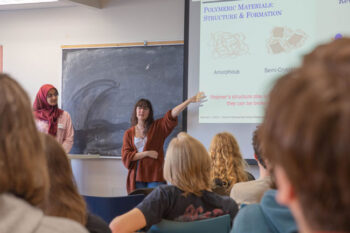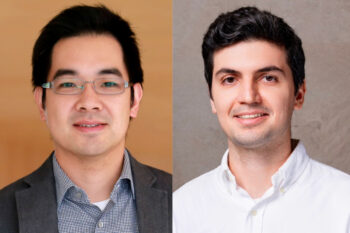A group of engineering students from the University of Toronto have created a device that could revolutionize how malaria is diagnosed in developing countries.
Joshua Dian (ElecE PhD candidate), Shyra Khosla (MechE 1T0), Martin Labrecque (ElecE 1T1, PhD candidate), Shervin Mehryar (ElecE 1T2) and Aaron Persad (MechE PhD candidate) received the 2010 James Dyson Award and praise from peers for their out-of-the-box thinking that could save lives around the world.
The group’s Automated Parasite Detection System (APDS) has the ability to replicate the work that would normally be done by highly qualified personnel. It prepares a monolayer of cells, and fixates and stains the cells in a repeatable, operator-independent manner. The device also includes a machine vision system capable of repeatable differentiation of infected from uninfected cells resulting in low false-positive and false-negative rates. In lay terms, it can diagnose malaria using clean blood work in as little as 60 minutes.
The project originally started out as an extra-curricular project, but soon turned into so much more, confessed Persad. It was the group’s desire to do something for others in Africa, where the majority of deaths occur that first spurred the work. “I was watching TV, and it really struck me how expensive medication is, and how there’s no guarantee it will work,” Persad said. “There’s still so much that needs to be done.”
The complexities that surround diagnosing malaria (especially in remote areas) can be difficult to understand. The painstaking process for identifying the parasite can take weeks in rural communities. Meanwhile, access to tools, resources, health specialists who can diagnose the parasite, and most importantly, funding to carry out the task, are serious handicaps that threaten to derail effective treatment.
“We wanted to create a more convenient, more accessible diagnosis process,” said Dian. “Something that would help others not just in places like Africa that people often think of when they hear malaria, but all over the world.”
The journey for the students from unlikely competitors to national winners was extremely difficult said Martin. The project went through several revisions to create the finished project — a portable device that is easy to transport and inexpensive to build. “We spent days inside Josh’s house going over everything again and again to make sure it was perfect. It was a challenge, but the fact this is one of the most pressing issues of our time keeps you motivated.”
Although winning an award of this magnitude is impressive to the U of T Engineering students, they’re more excited about what the future of the device may hold. They hope APDD can be adapted to other blood-borne parasites, if more funding were to become available, and to diagnose other diseases. “This could be the beginning of so much more,” said Khosla.
The team was funded in part by the University of Toronto and the local chapter of the Engineering World Health (EWH). Both groups provided tools, resources, labs and financial assistance to help with the project.



